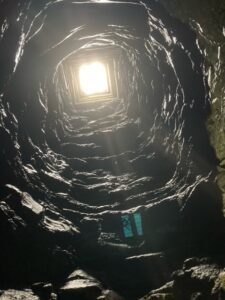“There’s a naked woman in the garden. Garden Pod Five to be exact.”
I’m happy to announce that my story “And Lifts Her Leafy Arms to Pray” has just been published in Third Flatiron’s Rhapsody of the Spheres anthology. This one is set on an offworld colony that has rejected nature (think Silent Running) and gets a not-so-gentle reminder of why the wilderness is important, courtesy of its own mythological past…
I’ve also sold a reprint of my sci-fi mystery “Death on the Nefertem Express” (originally appearing in The Magazine of Fantasy & Scienc Fiction) to Science Fiction World, China’s popular genre magazine.
And on a personal note, September was particularly newsworthy since I finally completed a novelette I’d been working on for several years, and which has handily dethroned “The Song of Lost Voices” as the most difficult, pain-in-the-ass composition I’ve ever done. Every writer has one. This one is also a prime example of the “dwarven hammer” philosophy that I mentioned in an older post. I rarely kill troublesome stories, opting instead to bury them and, from time to time, exhume them to tinker with.
This recent story had elements that I thought had value, though I couldn’t seem to make the story work. I’d write scenes, and delete them. I’d create characters and erase them. Sometimes I’d feel like I was making real progress, and then I’d smack into a granite wall, and my finger would poise over the file’s DELETE button. (There are several alternate timelines in which that story was consigned to the digital ash-heap).
Anyway, I was able to finish it because I climbed into a copper mine.
In East Granby, Connecticut, the first chartered copper mine in the United States (which later became the country’s first state prison) offers tours of its underworld. In an interesting odyssey of reinvention, over the years it also served as a zoo and speakeasy (the liquor was brought up in a bucket from one of the mine shafts, and lowered just as quickly when Jazz Age coppers showed up). Mind-boggling to think that every inch of these mines was carved with 18th century tools in a mere few decades. Exploring this curious little Stygia got me through the story, and it’s now making the submit-and-see rounds.

